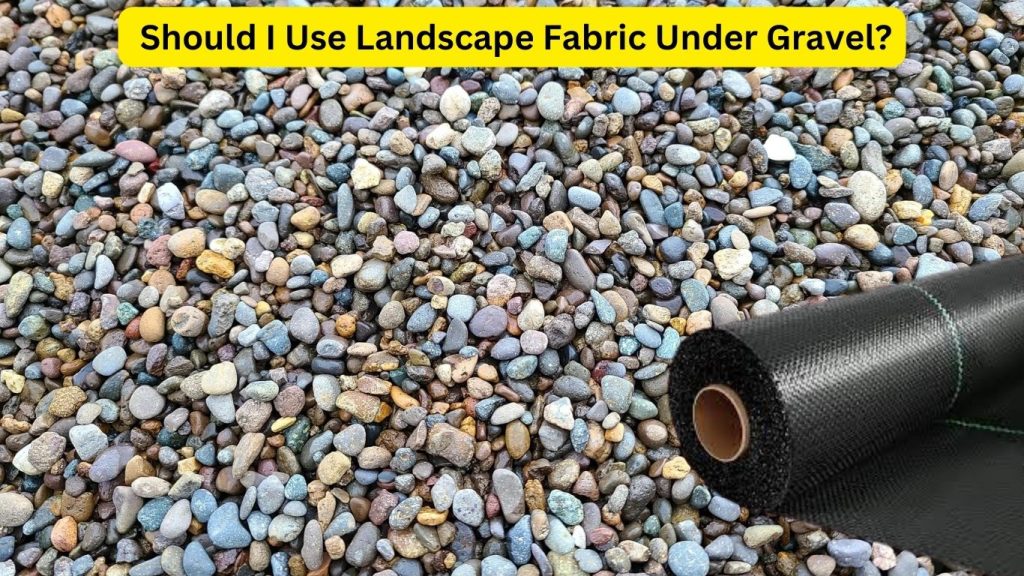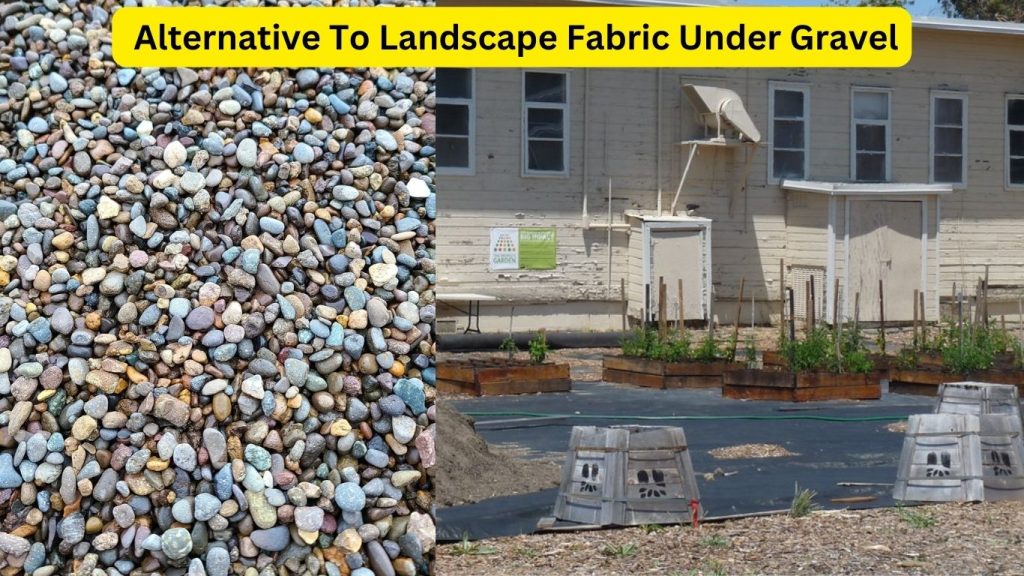Using landscape fabric under gravel is a common practice in landscaping and gardening projects. This geotextile material is designed to suppress weed growth and improve drainage when placed beneath a layer of gravel.

While it can effectively prevent weeds from emerging through the gravel, its benefits depend on proper installation and maintenance. Landscape fabric can hinder organic matter decomposition, leading to potential issues over time.
Consider factors such as the type of gravel, soil conditions, and long-term goals when deciding whether to use landscape fabric. A balanced approach to installation and monitoring is essential for maximizing its advantages while minimizing potential drawbacks.
Contents
Should I Use Landscape Fabric Under Gravel?
Yes, using landscape fabric under gravel can be beneficial in certain situations. It effectively prevents weed growth and improves drainage, enhancing the overall aesthetics and functionality of the area.
However, careful consideration is necessary. While it can offer advantages, it might hinder organic matter decomposition and necessitate proper installation and maintenance.
Assess factors like the type of gravel, soil conditions, and long-term goals to determine if landscape fabric aligns with your specific project requirements.
What Is The Best Landscape Fabric Under Gravel?
When selecting landscape fabric to use under gravel, it’s essential to choose a durable and high-quality option that suits your project’s needs. Non-woven geotextile fabric is often recommended for this purpose. It offers excellent weed suppression, drainage improvement, and durability.

Look for fabric with a weight of at least 3 ounces per square yard for optimal performance. Brands like Typar, Weed Barrier Pro, and Dewitt are known for producing reliable landscape fabrics suitable for gravel installations.
Prioritize materials labeled as UV-resistant to ensure longevity, and consider seeking recommendations from local gardening or landscaping experts for the best choice based on your specific climate and soil conditions.
How To Install Landscape Fabric Under Gravel: Step-By-Step Guide

Installing landscape fabric under gravel requires careful preparation and execution to ensure its effectiveness. Here’s a step-by-step guide:
Materials Needed:
- Landscape fabric
- Gravel
- Garden staples or anchor pins
- Scissors or utility knife
- Shovel or rake
- Optional: Weed barrier edging
Steps:
- Prepare the Area: Clear the area of debris, rocks, and existing vegetation. Level the ground if needed using a shovel or rake.
- Measure and Cut Fabric: Roll out the landscape fabric over the prepared area. Leave extra fabric on all sides to ensure full coverage. Cut the fabric to size using scissors or a utility knife.
- Secure Edges: Secure the edges of the fabric using garden staples or anchor pins. This prevents the fabric from shifting during gravel installation.
- Install Weed Barrier Edging (Optional): For added effectiveness, install weed barrier edging along the perimeter of the fabric. This will create a physical barrier that prevents weed growth at the edges.
- Spread Gravel: Spread a layer of gravel over the fabric. The thickness of the gravel layer will depend on your project’s requirements. Rake the gravel to achieve an even surface.
- Smooth and Compact: Use a rake or compactor to smooth and compact the gravel layer. This ensures the surface is level and stable.
- Trim Excess Fabric: Trim any excess fabric that extends beyond the gravel area. Be sure to leave a small overlap around the edges to prevent weed growth.
- Inspect and Adjust: Walk over the gravel surface to identify any areas where the fabric might be visible or uneven. Make adjustments as needed.
- Complete Edging (Optional): If using weed barrier edging, ensure it’s properly installed and secured to prevent any gaps that weeds could exploit.
- Regular Maintenance: Monitor the area periodically for any signs of weeds or fabric exposure. Pull out any weeds that manage to grow and adjust the gravel if needed.
Remember, proper installation is key to the long-term effectiveness of the landscape fabric. Following these steps will help create a barrier that suppresses weed growth and enhances drainage while allowing your gravel area to remain attractive and functional.
Alternative To Landscape Fabric Under Gravel:
If you’re looking for alternatives to landscape fabric under gravel, there are a few options you can consider:

- Mulch and Cardboard: Instead of landscape fabric, you can use a layer of mulch (such as wood chips or bark) along with cardboard or newspaper. Lay down a thick layer of cardboard or several layers of newspaper to suppress weeds, then cover it with mulch. This natural approach offers weed suppression while allowing for decomposition over time.
- Weed-Resistant Geotextile Grids: Geotextile grids or permeable pavers are interlocking panels made from a durable material. These grids provide structural support for gravel while also preventing weed growth. They allow for better load distribution and are an eco-friendly alternative to traditional landscape fabric.
- Sand Base Layer: Placing a layer of sand beneath the gravel can help prevent weed growth. However, this method might require more maintenance and might not be as effective as other options.
- Heavy Mulching: Instead of fabric, use a thick layer of mulch (at least 4-6 inches deep) to smother weeds and provide some level of drainage. While this approach may not offer the same level of long-term effectiveness as fabric, it can work well in certain situations.
- Regular Maintenance: Consider relying on regular manual weeding and maintenance to keep the gravel area weed-free. This option requires more effort but can be effective if done consistently.
- Herbicide Application: Using a pre-emergent herbicide can prevent weed growth under gravel. However, this approach involves the use of chemicals and may not be suitable for all situations, especially in areas where you want to maintain an organic or chemical-free environment.
Remember that the effectiveness of these alternatives can vary based on factors like local climate, soil conditions, and the type of weeds prevalent in your area. It’s important to choose an option that aligns with your project goals and the level of maintenance you’re willing to commit to.
Read Next:
Final Words
The decision to use landscape fabric under gravel depends on your specific landscaping goals and the conditions of your project area. While landscape fabric can effectively prevent weed growth and enhance drainage, it’s important to carefully consider its long-term implications.
Balancing its benefits with potential drawbacks, such as hindered organic matter decomposition, is crucial. Adequate installation and ongoing maintenance are essential to ensure its effectiveness over time. Prioritize understanding the type of gravel, soil composition, and future plans for the area.
By making an informed decision and implementing proper installation techniques, you can harness the advantages of landscape fabric while minimizing any potential downsides.